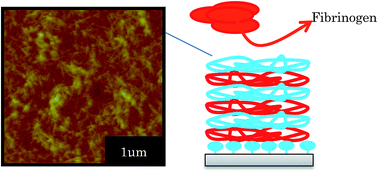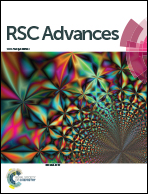Layer-by-layer self-assembled thin films of chitin fibers and heparin with anti-thrombus characteristics†
Abstract
Anti-thrombus coatings using natural polymers with high biocompatibility were successfully fabricated by a Layer-by-Layer (LbL) method. The cationic and anionic components were chitin nanofibers and heparin, respectively. LbL multilayers were successfully fabricated by depositing different numbers of bilayers. Analyzing the damping waves of Quartz Crystal Microbalance (QCM) measurements showed that the film hardened as the number of bilayers deposited increased. Mass change measurements via QCM, scanning electron microscopy, atomic force microscopy, ellipsometry, and X-ray photoelectron spectroscopy were also carried out. The density of the chitin nanofiber layers increased as the number of bilayers increased. Simultaneously, the film stability in solution improved. The fabricated 30-bilayer film showed a fibrous structure on its surface and no structural disorder, even after 48 hours immersion in phosphate buffered saline (PBS), so high stability in PBS was demonstrated. The anti-thrombus properties of the film were also investigated by measuring the amount of fibrinogen adsorbed using QCM. This film not only inhibits fibrinogen adsorption, but those fibrinogen which do adsorb detach relatively easily (compared with fibrinogen adsorbed onto an uncoated QCM substrate). Furthermore, while the uncoated glass substrate adsorbed a large quantity of blood on its surface, the 30-bilayer coated glass substrate successfully inhibited blood adsorption and blood solidification.


 Please wait while we load your content...
Please wait while we load your content...